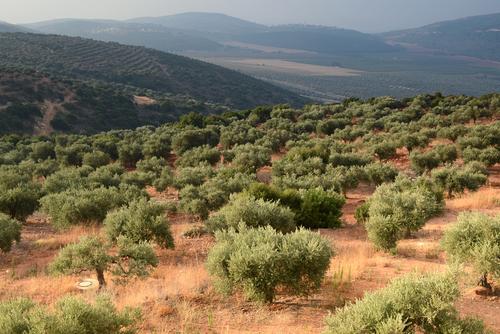Political alliances in the Middle East and North Africa are deeply influenced by the Sunni-Shiite divide within Islam.
It is often difficult for the Western public to understand the Muslim world—but following the “Arab Spring” revolts, and as the Syrian conflict draws Western intervention, understanding Islam can help the world citizen better navigate the political map.
About 60 percent of the world’s 1.62 billion Muslims live in the Asia-Pacific region, according to 2010 figures from the Pew Research Center. Only 20 percent of the world’s Muslims live in Arab countries.
The largest Muslim population is in Indonesia. Iran and Turkey are not Arab nations, but the majority of their citizens are Muslim.
The term “Arab” is also somewhat misunderstood and difficult to define. Being “Arab” is related partly to language, partly to culture and ethnicity, and partly to a political designation as such. Iran, where ethnic Persians are a majority, is not considered an Arab nation.
Most Arabs are Muslims—but some have adopted other religions, like Christianity or Druze, a monotheistic religion that started in the Middle East in the 11th century.
Muslims are divided mostly into two major groups, Sunni and Shiite—and the leadership of Arab countries usually align themselves with one or the other.
Sunni and Shiite Split
The Prophet Muhammad, born in the city of Mecca in Saudi Arabia, was the founder of Islam in the 7th century. The division between Sunni and Shiites began immediately after the death of the Prophet Muhammad in the year 632—not because of spiritual differences. It was a leadership dispute.
Shiites wanted the next leader to be from Muhammad’s family. They believed his cousin, married to his daughter, Ali bin Abu Talib, should have become the new leader. The word “Shiite” is a short of the term “Shiat Ali,” the Party of Ali.
Sunni means in Arabic, “follows the tradition of the Prophet.” The Sunni Muslims believed that the new leader should be elected among the most capable to assume the role. They said that there was no basis in Islam for a hereditary privileged class of spiritual leaders. They elected the Prophet Muhammad’s adviser, Abu Bakr, as their leader.
The initial division was not spiritual, but rather related to political leadership, and even today Shiite and Sunni Muslims share the five main pillars of Islamic belief: creed (shahadah), daily prayers (salat), alms giving (zakah), fasting during the month of Ramadan, and the pilgrimage to Mecca (hajj) at least once in a lifetime.
But with time, the spiritual life of the Sunnis and the Shiites developed some differences. For example, Sunnis rely on the teachings of the Prophet (sunna). The Shiites give more weight to the guidance of their spiritual leaders. The high-ranking clerics, Ayatollahs, are believed to be reflections of God on earth.
Adherents to both groups have founded terrorist organizations. Al-Qaeda is affiliated with Sunnis, and Hezbollah with Shiites, for example.
Islam in Today’s Syria
In the Middle East and North Africa, most countries have a Sunni majority and the leadership is also Sunni. However, majority Shiite countries include Iran, Iraq, and Bahrain, explained Vali Reza Nasr, the dean of the Johns Hopkins School of Advanced International Studies and an expert on the Middle East. Almost half of Lebanon’s population is also Shiite.
In Syria, only 15 percent are Alawi, a sect in the Shiite group, but Syrian President Bashar Assad is Alawi.
These affiliations are reflect in the political map of the Middle East in general, and in the Syrian conflict in particular.
On one side, the Shiite alliance of Iran, Syria, and Hezbollah in Lebanon support Assad. On the other side, what is called the “Sunni axis”— including Turkey, Jordan, Saudi Arabia, and the Unites Arab Emirates (UAE)—stand with the Syrian rebels. The rebels’ supporters may have provided some financial help, but none have sent military help.
According to Professor Uzi Rabbi, head of the Dayan Center Institute in Israel: “Unlike Egypt and Tunis, the Syrian Arab Spring struggle is not only between a leader and rebels, but between Sunnis and Shiites, and therefore it includes also Lebanon and Iraq.”
Prof. Eyal Zisser, dean of the Faculty of Humanities at Tel Aviv University, Israel, explained that the rebels are from the Sunni rural class. The minorities in Syria—mostly Druzes and Christians—are not fighting against Assad, as many are afraid of an extremist Islamic regime if the rebels win.
Zisser said the situation is much more complex: “Syria became, like Afghanistan and Iraq, a center where thousands of Sunni extremists from Jihadist groups volunteer to fight against the Assad regime, which they describe as an ‘infidel Alawi regime supported by Shiites.’”
He said Assad’s departure would not be the end of the fight between Sunnis and Shiites in Syria—the struggle will continue and no one can predict when it will stop.




